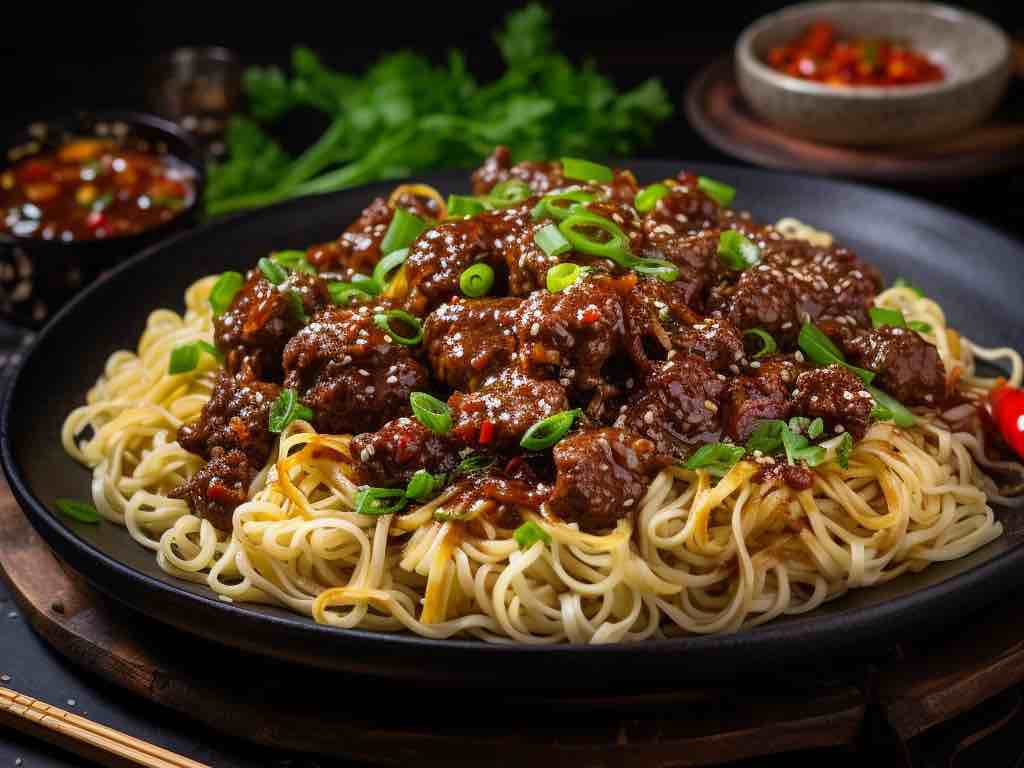
Exploring the Rich Flavors of Mongolian Ground Beef Noodles
|
|
Time to read 5 min
Welcome to One Stop Halal!
Written by: Najma A.
|
|
Time to read 5 min
With its unique blend of flavors and cultural influences, Mongolian cuisine has been captivating food enthusiasts worldwide. One dish that stands out for its simplicity and rich taste is Mongolian Ground Beef Noodles. This delightful combination of tender ground beef, savory sauces, and hearty noodles creates a dish that is not only delicious but also a testament to the region's culinary diversity.
Before delving into the intricacies of Mongolian ground beef noodles recipe, let's take a moment to appreciate the broader culinary landscape of Mongolia. Nestled between Russia and China, Mongolia's cuisine is heavily influenced by the nomadic lifestyle of its people and the harsh climate. Meat, particularly beef, mutton, and goat, forms the cornerstone of Mongolian meals, reflecting the nomads' reliance on animal husbandry for sustenance.
These additions contribute to the dish's visual appeal and provide essential vitamins and minerals.
Mongolian Ground Beef Noodles not only tantalize the taste buds but also offer a glimpse into the rich cultural tapestry of Mongolia. The dish reflects the nomadic lifestyle and resourcefulness of the Mongolian people, using simple yet flavorful ingredients readily available in their environment.
As with any traditional dish, Mongolian Ground Beef Noodles have evolved and diversified over time, with each region putting its unique spin on the recipe.
Easy Mongolian Ground Beef Noodles are transformed into a hot pot dish in some regions. The ingredients are arranged in a communal pot of simmering broth, allowing diners to cook noodles and meats at the table. This collective experience adds an interactive element to the meal and brings people together, mirroring the communal nature of Mongolian nomadic life.
Vegetarian versions of Mongolian Ground Beef Noodles are becoming increasingly popular for those seeking a plant-based alternative. Substitute tofu or tempeh for the meat and load up on a colorful array of vegetables to create a satisfying and cruelty-free dish.
The success of any culinary masterpiece lies in its flavors, how it is presented, and the beverages with which it is paired. With its rich and savory profile, Mongolian Ground Beef Noodles offers a versatile canvas for creative presentation and thoughtful pairings, enhancing the overall dining experience.
Welcome to the Home of the Halal Beef. We carry various beef cuts that are hard to find elsewhere. We deliver to your doorstep anywhere in the United States within 1-2 business days.
Mongolian Ground Beef Noodles offers a delicious journey into the heart of Mongolian cuisine, combining simplicity with bold flavors. This dish, rooted in nomadic traditions, showcases the adaptability and resourcefulness of the Mongolian people. Whether enjoyed in its traditional form or with innovative twists, these noodles serve as a testament to the enduring legacy of Mongolian culinary artistry. As you savor each bite of Mongolian Ground Beef Noodles, let the flavors transport you to Mongolia's vast landscapes and nomadic traditions, creating a culinary experience that transcends borders and time.

© 2025 One Stop Halal, Inc.